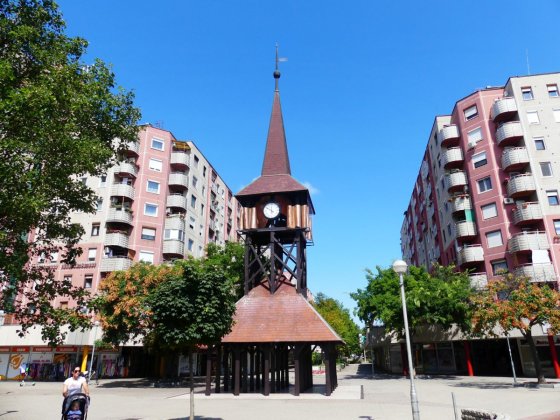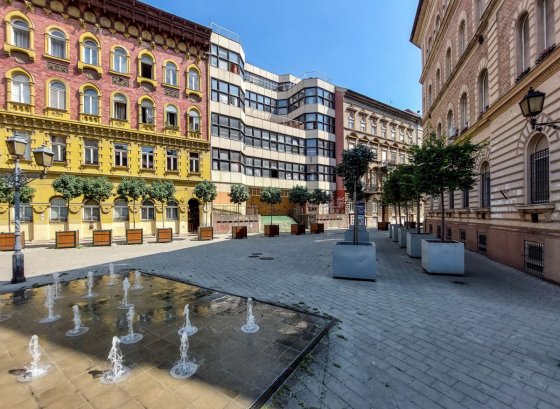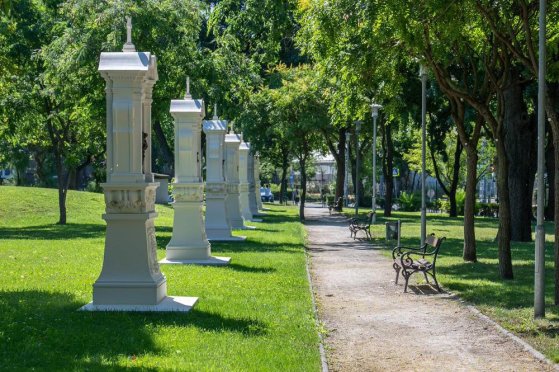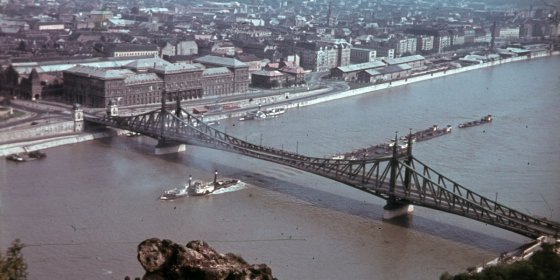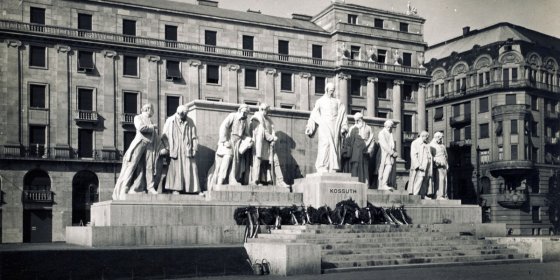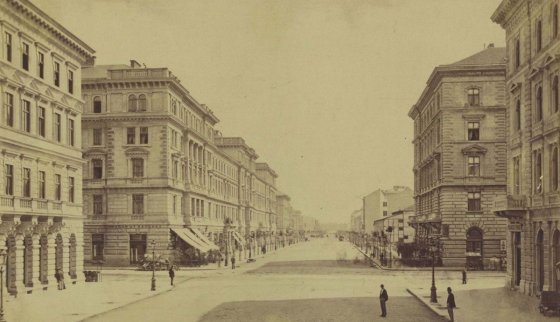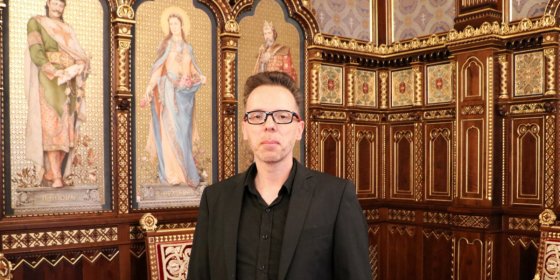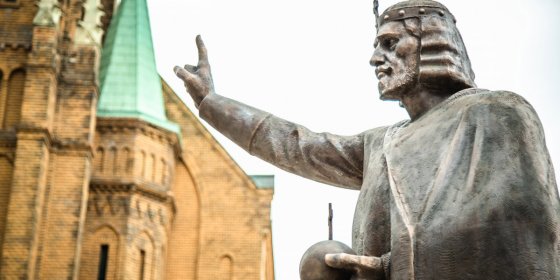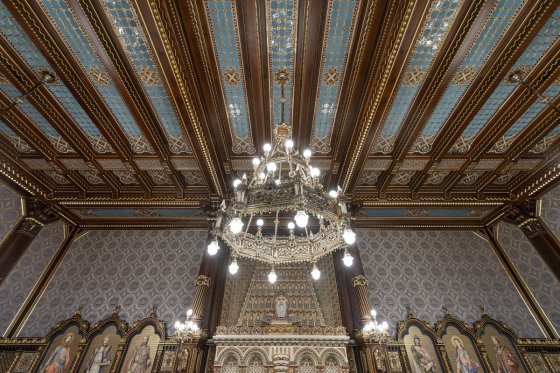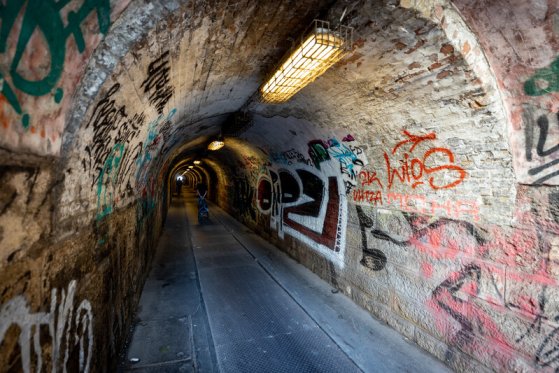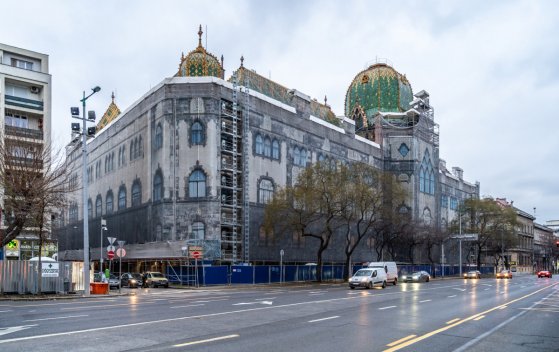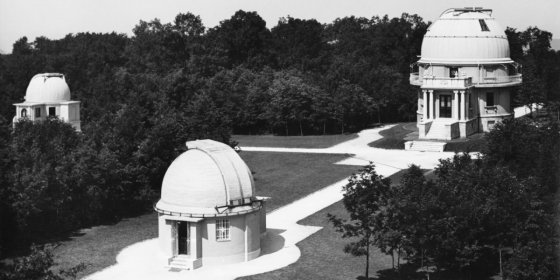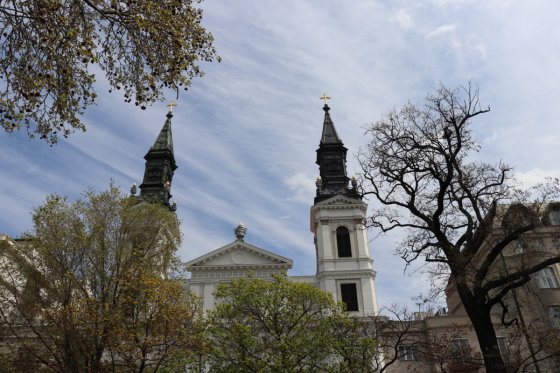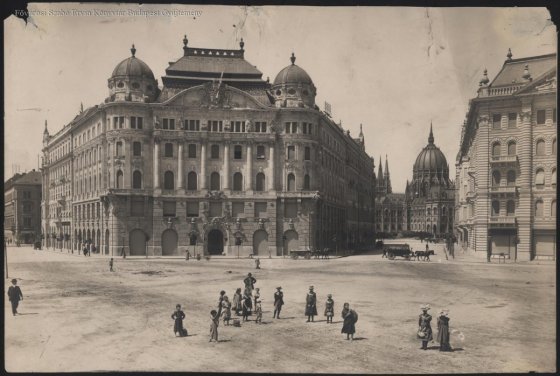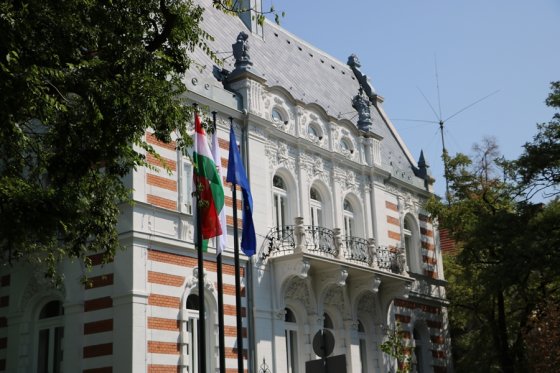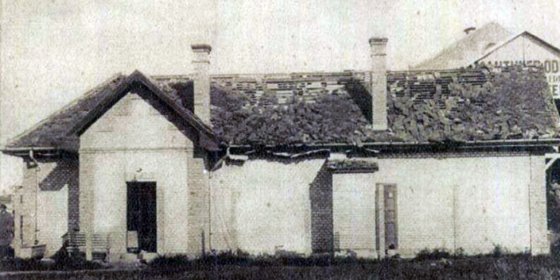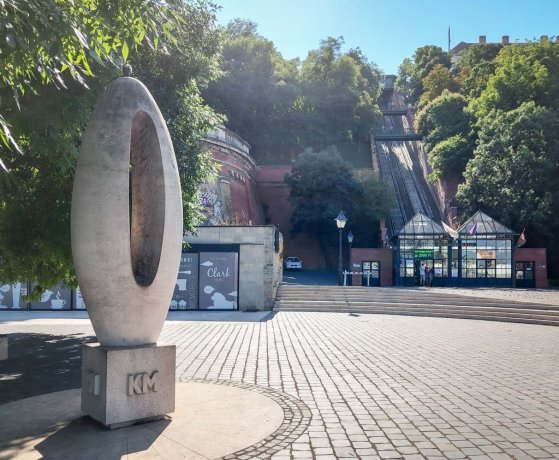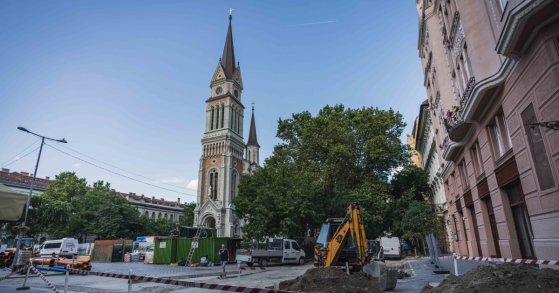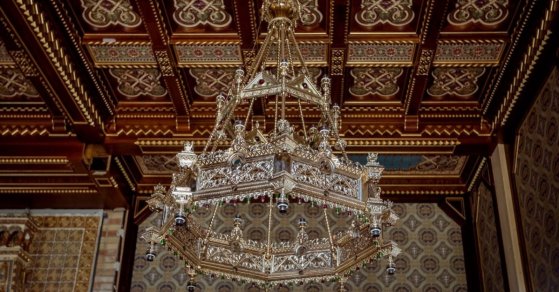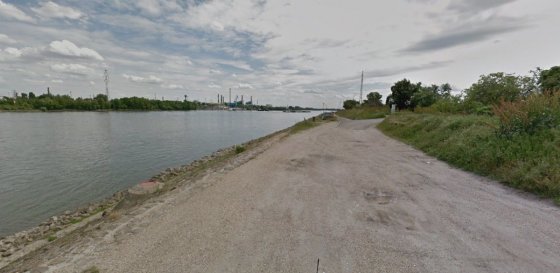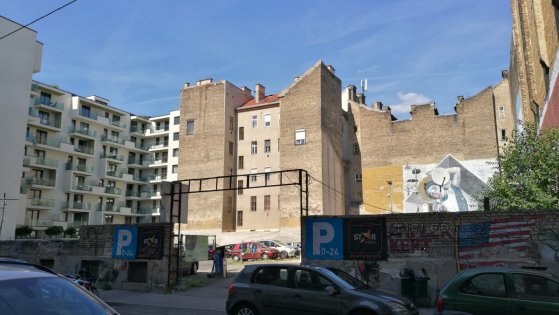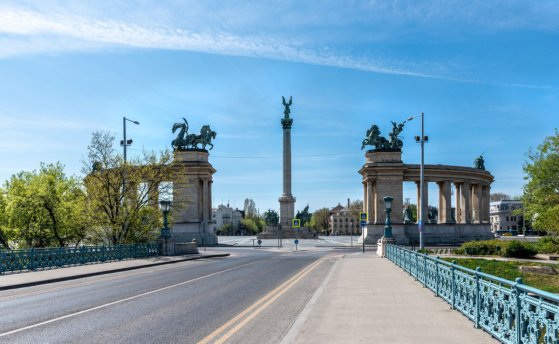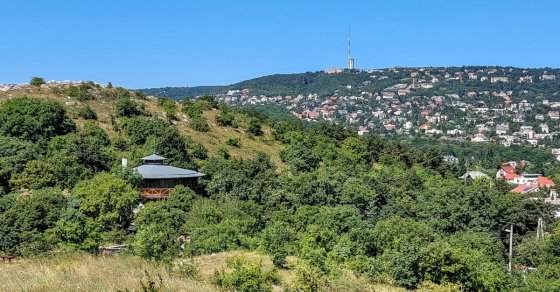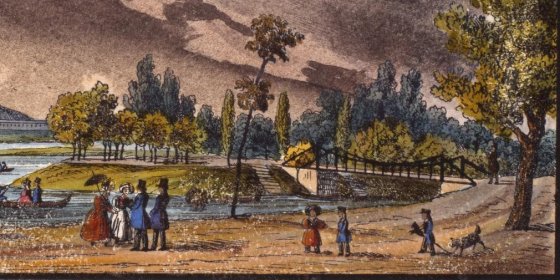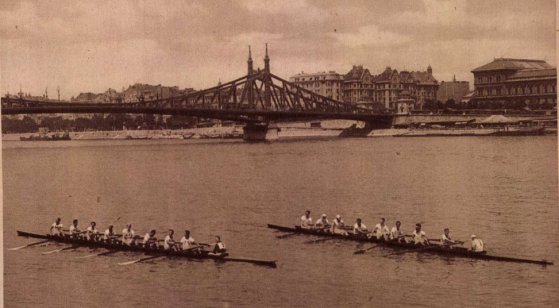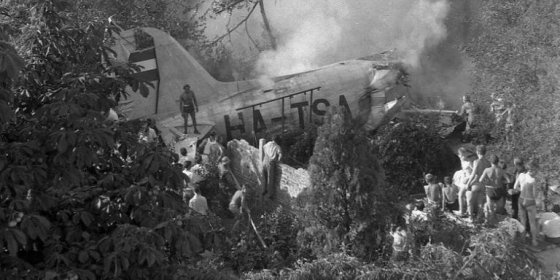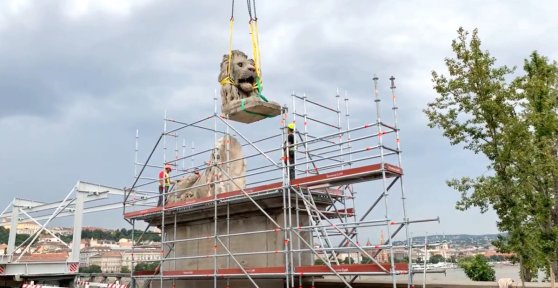 The „intertwined history” of the bridges and the city of Budapest
Which ideas and events have shaped the fate of bridges of Budapest and the cityscape? Alongside many other interesting facts, this question is also answered this newly published book by the Budapest City Archives, which introduces the history of bridges in Budapest.
The „intertwined history” of the bridges and the city of Budapest
Which ideas and events have shaped the fate of bridges of Budapest and the cityscape? Alongside many other interesting facts, this question is also answered this newly published book by the Budapest City Archives, which introduces the history of bridges in Budapest.
PestBuda
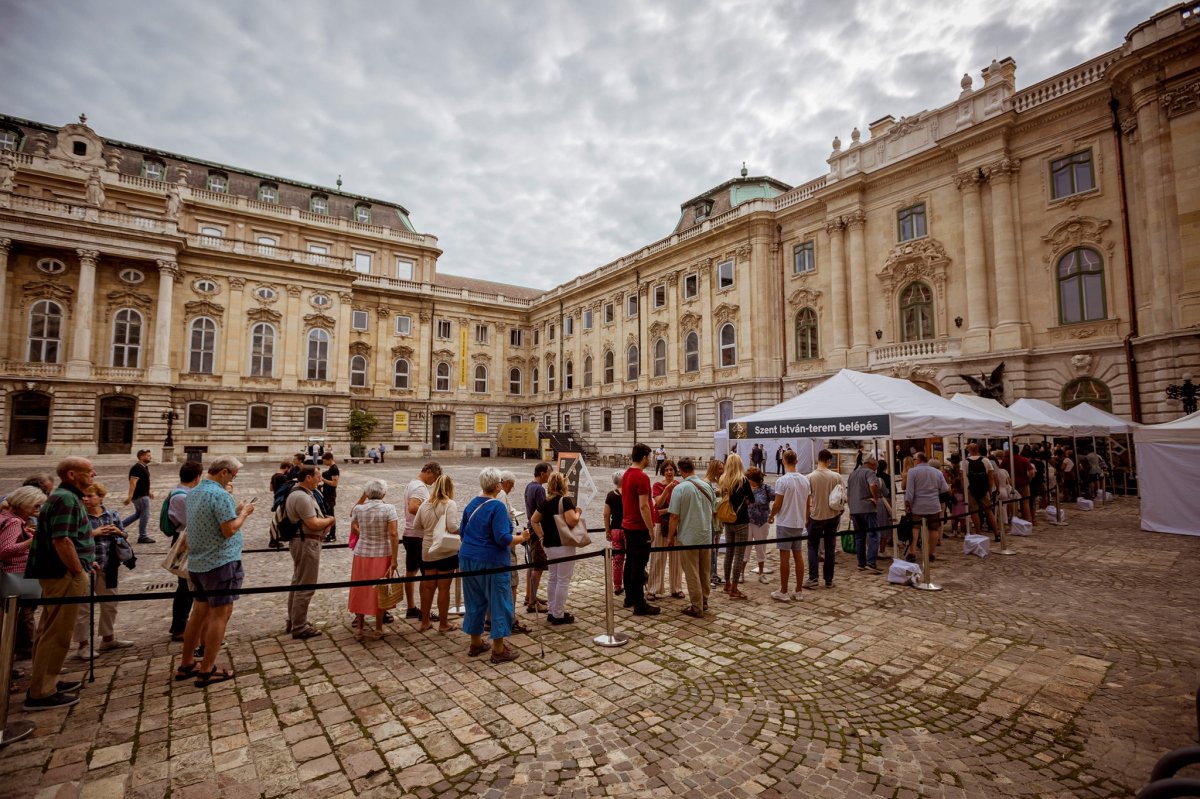 Thousands were curious about the biggest architectural attraction of 2021
Thousands were curious about the biggest architectural attraction of 2021
August 25, 2021 at 10:00 AM
Probably the biggest architectural attraction of 2021 is the reconstruction of the southern connecting wing of the Buda Castle and the re-creation of the St. Stephen's Hall. On the festive weekend of 20 August, an unprecedented crowd waited at the palace courtyard to enter the now handed over part of the building. Krisztina Sikota, Deputy Director General of Tourism and Culture of the Várkapitányság, evaluated the events for our site.
The clock tower in Káposztásmegyer was renovated
August 24, 2021 at 3:00 PM
A nice and interesting highlight of the microdistrict in Káposztásmegyer is the clock tower reminiscent of the Transylvanian belfries. The building, made of oak by handicrafts, was renovated and cleaned in August.
The tumultuous fate of the small Pompidou in Pest - The former building of the Almássy Square Leisure Center is transformed into a hotel
August 24, 2021 at 9:00 AM
The Almássy Square Leisure Center has been sleeping its (second) Sleeping Beauty dream for almost a decade. The former popular cultural institution was sold by the municipality of Erzsébetváros in 2007 and although the hotel building plans at the time did not materialize, an application for a building permit was recently submitted to expand and transform the building, 35 years ago known as the small Pompidou in Pest, to a hotel.
The stations of Golgota Square were erected
August 23, 2021 at 3:30 PM
The rebirth and re-creation of a lost, destroyed monument is always a joy for the community. Especially when it comes to a work of special significance, such as the Calvary in Golgota Square in Józsefváros, which was demolished in 1971. The 14 stations are now visible again in their original beauty.
It was rebuilt, but its decoration and name were changed - the Liberty Bridge was handed over 75 years ago
August 23, 2021 at 9:30 AM
At the end of the spectacular fireworks held in Budapest on the occasion of the founding of the state, glowing Greek fires were started on the bridges, including the Liberty Bridge. At that moment, surely few thought it was the first bridge to be rebuilt after the devastation of World War II and handed over to traffic on 20 August 1946.
The migration of the Kossuth statue in front of the Parliament - They wanted to erect the monumental memorial opposite the main entrance of the Parliament
August 22, 2021 at 11:00 AM
The square in front of the Parliament has been called Kossuth Square since 1927, since the statue of the great statesman was inaugurated that year. The designation of its exact location provoked lengthy debates, and the finished work was tentatively erected at several points of the square by the time it reached its final location.
Inspired by the boulevards of Paris - in 1876 the present-day Andrássy Avenue was handed over
August 21, 2021 at 10:00 AM
The traffic between the inner city of Pest and the Városliget went through Király Street for a very long time. The narrow street was very crowded, as not only the normal traffic passed through here, but also those who wanted to go to the Városliget for a little refreshment. The Avenue [Sugárút in Hungarian], officially handed over 145 years ago, in 1876, today's Andrássy Avenue, along which lavish palaces were built in place of the one-storey houses, was made to aid this situation.
"The architects of the Royal Palace were geniuses" says the re-designer of St. Stephen's Hall
August 20, 2021 at 10:00 AM
As an architect, he redrawn every detail of the St. Stephen's Hall, which opens on 20 August: the windows, historic doors, and parquet floors of the southern connecting wing of the Royal Palace. Tibor Angyal has been recreating the historic ceremonial hall destroyed after World War II for six years and, with experience, he claims that the reconstruction of the Royal Palace, which was destroyed with mad rage and method after the war so that not a single square metre of original space remains, is a historic opportunity.
There was no place for it in the St. Stephen's Park - the statue of our founding king was erected in Kispest
August 19, 2021 at 6:30 PM
The work was originally intended to replace the statue of György Lukács in Szent István Park, but the Capital decided otherwise, so the 2.5-metre-high bronze statue of our founding king ended up not in the park named after him, but in the Templom Square of the 19th District.
The reborn St. Stephen's Hall of the Buda Castle was solemnly handed over
August 18, 2021 at 1:30 PM
The St. Stephen's Hall of the Buda Palace, which was once one of the most ornate rooms in the palace, was renovated with complete historical fidelity. The room, rebuilt in its original form, will be open to the public free of charge from 20 August until the end of the month, following today's official handover.
Budapest's oldest and most neglected pedestrian tunnel is finally being renovated
August 17, 2021 at 4:30 PM
The pedestrian underpass built in 1874 connecting Bajza Street in the 6th District with Bulcsú Street in the 13th District, which runs from the Nyugati railway station, has been in extremely poor condition for decades, and is also dirty and dangerous. However, the underpass, almost the same age as the capital, is now being renovated, so it will be closed to traffic on 23 August and will only reopen in the autumn.
The long-awaited reconstruction of the Museum of Applied Arts can begin
August 16, 2021 at 6:00 PM
During the works, the decorations of the beautiful Art Nouveau palace designed by Ödön Lechner will be restored inside and out, the foundation of the building will be strengthened, several internal partitions and courtyard annexes will be demolished, as well as the museum's 21-meter-high chimney.
The sky over Budapest - the observatory was moved to Svábhegy because of Trianon
August 16, 2021 at 9:00 AM
The construction of the new Budapest Observatory began on Svábhegy a hundred years ago, which replaced the Ógyalla observatory lost with Trianon. Despite the initial difficulties, a European-level research center was set up in a few years near Normafa, where the skies of Budapest are still being viewed in the observatory's typical domed building.
One tower or two? - The largest Orthodox church in Hungary was consecrated 220 years ago
August 15, 2021 at 7:30 PM
The tower of a church always has a special significance. It is an important part of the cityscape, it helps with orientation and of course a signal to the community as well. The tower (or towers) of the Greek Orthodox Church of Our Lady in Petőfi Square not only define the cityscape, but they are also signals in the history of the 220-year-old church.
The Adria Palace in the storm of history
August 15, 2021 at 3:00 PM
The book titled Hazának használj! Az Adria-palota története [Help the Homeland! The History of the Adria Palace] was recently published, which not only presents the history of the nearly 120-year-old building in Szabadság Square, which is currently under renovation, but also provides an insight into the lives of the former owners and celebrities who lived here.
The hospital specialist architect - Vilmos Freund was born 175 years ago
August 15, 2021 at 10:00 AM
The architectural versatility of Vilmos Freund, born 175 years ago, is characterized by the fact that in addition to the magnificent tenement houses and villas of Andrássy Avenue, office and sacred buildings, as well as several hospital buildings, are associated with his name. That is why he is also referred to as a hospital specialist. It is interesting to know that the literature knows only one of his work that was not built in the capital: the palace of the Adria Hungarian Shipping Company in Rijeka.
A part of the city has become uninhabitable - We still do not know who blew up the Csepel munitions depot 95 years ago
August 14, 2021 at 9:30 AM
A large-scale explosion shook Csepel and the southern part of Budapest on 12 August 1926, at quarter to seven p.m. The disaster 95 years ago caused severe damage to houses in Csepel and Budafok: it broke the window panes, swept the tiles off the roofs. Fortunately, the explosion did not claim human lives, the blaze and sound of which could be seen and heard throughout Budapest.
Miklós Borsos, who made the Zero Kilometre Stone, was born 115 years ago
August 13, 2021 at 9:00 AM
Miklós Borsos, who was recognised as a sculptor, medalist and graphic artist, was born on 13 August 1906, in Nagyszeben (today's Sibiu, Romania), Transylvania, 115 years ago. He lived in Győr, and then in Budapest from 1945. In winter, he worked in the Castle District, at 6 Úri Street, and in summer, in Tihany; his permanent museum can be visited in Győr. Several of his works can be seen in Budapest, and a few of his works involuntarily attracts attention.
What will Bakáts Square look like?
August 12, 2021 at 4:00 PM
The renovation of Bakáts Square in Ferencváros has been on the agenda for a long time, so we are very curious to see what this cozy area, surrounded by old trees, will look like. According to the district local government, there is no need to wait long for an answer, because the works will be completed by December. The green spaces, pavements and street furniture will be renewed, strengthening the city park function of the square. However, parking will be restricted, car traffic will only be allowed on the longer sides of the square.
The world-famous chandeliers of the Kissling Factory - The former ornate luminaires were re-created for St. Stephen's Hall
August 12, 2021 at 11:00 AM
Among the outstanding applied arts companies of the age of dualism, Rudolf Kissling and his son played a significant role with their chandelier and bronze cast factory. Thanks to their artistic work, many of the public buildings built in this era were decorated with their chandeliers and other bronze objects. The original chandeliers of the St. Stephen's Hall in Buda Castle were also made by the Kissling Factory, and the works of applied art were re-created after a long research work.
The local council is planning a community space next to the Árasztó Road dam
August 11, 2021 at 8:00 PM
The Danube Bank area on Árasztó Road in the 11th District would temporarily function as a new public space from the end of August. The local council and the City and River Association (Város és Folyó Egyesület - Valyo) would set up picnic tables and sunbeds to promote the shoreline, the Újbuda district newspaper reported.
Hotel to be built on Kertész Street vacant lot
August 11, 2021 at 9:30 AM
The 19th-century residential houses in the 7th District, 21 and 23 Kertész Street were sold in 2004 by the management of the 7th District in a case known as the Erzsébetváros real estate panama. Both buildings were demolished. Apartments were designed in their place, but the idea did not materialise. Now it turns out that a 254-room hotel is being built on the plot that has been empty for 15 years and has been operating as a car park.
Parking garages are being built on Mexican Road for the car-free City Park
August 10, 2021 at 7:00 PM
The creation of the car-free City Park will be facilitated by the P + R car parks to be built at the Mexican Road terminal of Kisföldalatti, the design contract of which was signed today by the Budapest Development Centre and the winner of the tender, Középülettervező Zrt. The creation of parking garages is integral to the renewal of transport in the area.
Sas Hill: a place surrounded by urban legends
August 10, 2021 at 9:30 AM
Hikers of Sas Hill ('Eagle Hill') in Budapest are in a very privileged position, as the area had been closed to the public for decades. Today, after prior registration, anyone can visit the hill that rises above the BAH junction. If someone walks around with professional guidance, it is safe to say that they will have an outstanding experience: a unique panorama and real plant rarities await them.
They wanted to call the first suspension bridge in Pest the István Bridge, eventually it was called Dróthíd (Wire Bridge)
August 9, 2021 at 3:00 PM
Wire bridge. It’s a strange name, though that’s how the little bridge, which was handed over 195 years ago, on 9 August1826, in the Városliget, near today’s George Washington statue, was called. The small footbridge was a new technology at the time, as it was a cable bridge and the first suspension bridge in Pest.
István Széchenyi introduced rowing to the Hungarian capital almost 200 years ago
August 7, 2021 at 10:00 AM
At the Tokyo Olympics, Hungarians once again performed very well in water sports, in keeping with tradition. Rowing became established in Hungary thanks to István Széchenyi, who became acquainted with this sport in England. At the end of the 19th century, competitions were held regularly on the Budapest section of the Danube. Moreover, every year since 1925, university sports clubs have compared their skills on the Danube between Margit Island and the main entrance of the University of Technology, thanks to which countless photographs have survived in which we can see the old pre-war city behind the rowers.
An almost concealed plane crash in Budapest - the tragedy in Zugló took place 60 years ago
August 6, 2021 at 3:30 PM
A terrible accident happened 60 years ago in Budapest: a plane crashed into a house in Zugló. The causes of the tragedy, which claimed 30 lives, and the official handling of the accident are more than interesting, as the authorities at the time were trying to cover up the case. Today, however, we know the sad story that put an end to the sightseeing flights over the capital for a long time.
For the first time, we can see in photos what the reborn St. Stephen's Hall looks like
August 6, 2021 at 12:00 PM
For the first time, we can see in photos what the new St. Stephen's Hall in the Buda Castle looks like, which will be opened to the public on 20 August, in two weeks. In the newly taken photographs, we can see several details of the historic ceremonial hall, including the new Zsolnay fireplace, new floor and wall coverings, new pyrogranite images of kings and Hungarian saints, and even a close-up of an armchair and a curtain upholstery.
The first lion statue was taken off the Chain Bridge
August 5, 2021 at 2:00 PM
During the renovation of the Chain Bridge, the removal of the stone lions at the Pest bridgehead was started. The three-piece sculptures will be removed and restored, with plans to return them to their place at the end of next year. During the renovation, only those parts of the works that originally existed are restored.
The Buda Castle under constructionwas also visited by Maria Theresa, who visited the capital in 1751
August 4, 2021 at 3:00 PM
Although she gave permission to expand the Buda Castle, Maria Theresa visited Pest and Buda only twice. Her first visit took place in August of 1751, the 11th year of his reign, 270 years ago. This was when the diet was held in Bratislava and during that time the royal court spent a few days in Pest and Buda.
More articles
 The „intertwined history” of the bridges and the city of Budapest
Which ideas and events have shaped the fate of bridges of Budapest and the cityscape? Alongside many other interesting facts, this question is also answered this newly published book by the Budapest City Archives, which introduces the history of bridges in Budapest.
The „intertwined history” of the bridges and the city of Budapest
Which ideas and events have shaped the fate of bridges of Budapest and the cityscape? Alongside many other interesting facts, this question is also answered this newly published book by the Budapest City Archives, which introduces the history of bridges in Budapest.
 The Bridge Report, which brought a turning point in the history of Budapest
A travel report that changed the history of Pest and Buda, as well as Hungary. The little book contributed to the change of half a thousand years of legal customs and the implementation of an investment of unprecedented size and technical quality. This book was The Bridge Report [Hídjelentés in Hungarian].
The Bridge Report, which brought a turning point in the history of Budapest
A travel report that changed the history of Pest and Buda, as well as Hungary. The little book contributed to the change of half a thousand years of legal customs and the implementation of an investment of unprecedented size and technical quality. This book was The Bridge Report [Hídjelentés in Hungarian].
 Drama on the university wall - The heroic monument was planned 95 years ago
In the constant hustle and bustle of the Egyetem Square in Pest, the students may not even notice the monument that decorates the short section of wall between the church and the central building of ELTE. However, it commemorates their predecessors, the heroes who fought for their country in World War I, and those who heroically helped them. The first design of the dramatically collapsing soldier was born in 1928, ninety-five years ago.
Drama on the university wall - The heroic monument was planned 95 years ago
In the constant hustle and bustle of the Egyetem Square in Pest, the students may not even notice the monument that decorates the short section of wall between the church and the central building of ELTE. However, it commemorates their predecessors, the heroes who fought for their country in World War I, and those who heroically helped them. The first design of the dramatically collapsing soldier was born in 1928, ninety-five years ago.

